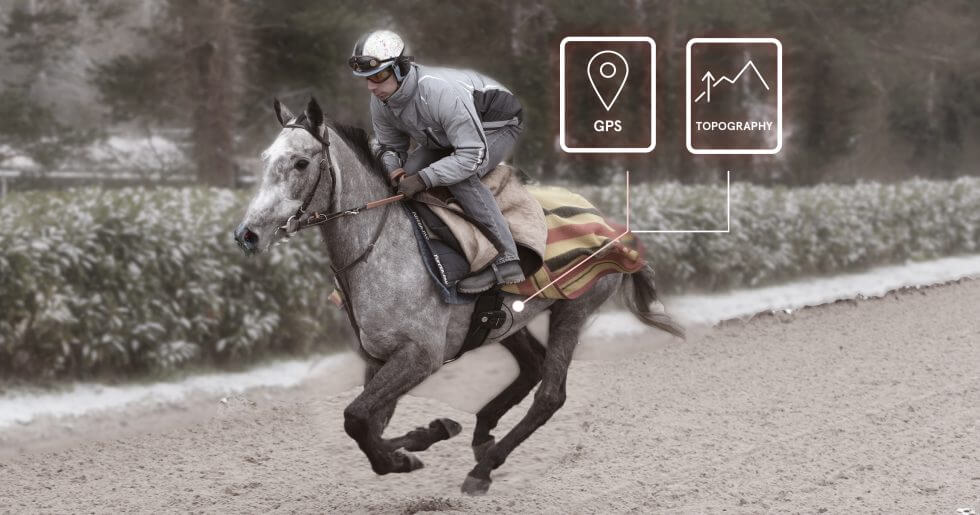Topography is a factor that affects the speed of athletes. The slope has a clear and intuitive impact on humans’ body and therefore on speed. However, the consequences are different for the athletic horse according to a study conducted by the Structure and Motion Lab of the Royal Veterinary College of London. The aim of this study was to establish whether or not racing speeds could be explained by a power limit. Thus, if the speed was mainly explained by the power relatively to the physical effort required, the climbing speed should prove to be less important and the descending speed more important, the energy effort required being respectively more and less important. The results of their study refuted these assumptions.
On the agenda:
1. The impact of slopes on the human athlete
1. The impact of the slope on the human athlete
On uphill slopes, muscles are more strained and require greater energy expenditure at the same speed. On the opposite, on a downslope, the energy expenditure required is lower, and reaching a fast speed is easier. The acceleration caused by a downslope is explained by the energy gain resulting from the displacement of the body’s centre of gravity with the drop in altitude. A slope even allows to reach over-maximum speeds, higher than the maximum speeds reached by the athlete during his training.
Training at over-maximum speed, achieved through a downhill slope for example, also allows the sprinter to better understand his pace and his body when he reaches his maximum speed. In addition, alternating uphill and downhill training allows the human athlete to increase his maximum speed. However, the loss of speed on climbs is twice as high as the gain in speed on downslopes.
2. Links between speed and uphill slopes in the horse
Contrary to what was expected, the maximum speeds achieved during the race occurred when the slope of the terrain was neutral. In all other cases of slopes, whether ascending or descending, speeds decreased. Thus, when the horse faces a slope, an uphill or a descent, the horse reduces its speed.
Data collected on uphill slopes supports the hypothesis of a metabolic power limit of speed. The steeper the ascent, the greater the effort required of the horse. In an uphill race, this means that horses with a higher metabolism will stand out from others in their ability to compensate for the additional energy cost caused by the slope by better energy mobilization to maintain a constant speed.
3. Links between speed and downslopes in the horse
On the other hand, in a downslope, a decrease in speed is observed when the decrease in power requirement was expected to explain an increase in speed. The fact that the horses also slows down on downwards slope proves that factors other than metabolic factors are involved in explaining speed regarding topography. It is not only the efficiency of the heart and muscles, the sources of the general energy supply, that influence speed.
How then can it be explained that horses have to reduce their speed when approaching a downslope? What other factors can explain a consequent deceleration of horses on a downslope?
When going downhill, the weight of the horse is caused to move forward, on the animal’s forehand. Thus, a greater energy consumption of the forelegs justifies a small part of the observed slowdown but this is considered negligible. Two main hypotheses are put forward by scientists.
The decrease in downhill speed could be explained by the different muscular and tendinous aptitudes of the forelegs in horses and humans. In horses, the fibres of the foreleg muscles are shorter than those of humans, and the structures of the extensor tendons of the equine knees are less effective in countering the gravity-induced compression of the limbs. Thus these factors would not allow the horse to face the downslope with as much efficiency as humans. If this hypothesis were to be verified, training work carried out downhill would enable the horse to adapt its muscles and tendons to this type of effort and its capacities on the slope would increase. Thus, when the horse faces a slope, uphill or downhill, the horse reduces its speed.
More probably, this slowing down in the downslopes could also be explained by a mechanical functioning of the forelegs, inherent to the horse, which is not conducive to high speeds in downslopes. If this hypothesis prevailed, working on the slope would not help to improve the speed of the horse downhill, and would even cause risks of injury by pushing a skeleton and a musculature which, because of their constitution, do not allow to reach high speeds downhill. The difficulty for horses to maintain high downhill speeds may be due to the anatomical simplicity of their forelegs which limits weight resistance and stability.
A last hypothesis, less considered by scientists, is the influence of the psychology of the horse, or the influence of its free will. Difficult to evaluate, these parameters of fear, the reflex to preserve its integrity, its will to keep control of its gait, can vary according to the horse and explain in part why they tend to slow down in the downslopes.
Conclusion
The answer to this question requires further study. Arioneo’s teams are putting their expertise in studies and the design of algorithms to work on a daily basis in order to be able to contribute to research that will one day help to settle this debate.
Keywords: slope, speed, energy expenditure, metabolic power, topography


